Code for kids? Indeed! We’ve been repeatedly talking about the many benefits of learning how to code. You already know coding will boost your kids’ 21st-century skills and will strengthen a number of abilities such as problem-solving, critical thinking, creative thinking and teamwork.
But, when we ask ourselves what are the best programming languages for kids, there isn’t just only one answer. There are multiple coding languages that can be considered “optimal” for kids, depending on the methodology the instructor uses to teach the content.
That being said, there are some programming languages that are better suited to children’s learning process. Programming languages that are more user-friendly, or that have a structure that will be easier for your kids to understand.

What are the best programming languages for children and teens?
At this point, we’d like to mention only 4 out of hundreds of available options. These 5 have been tested and proven. Children from all over the world have tried these programming languages and have succeeded in creating outstanding apps, or breathtaking games and software.
Scratch
Scratch is a great way to introduce your kids to the world of programming. Its visual, colorful, and friendly environment enables kids to feel like they’re playing while creating a certain something. Scratch blocks of code have been implemented in a number of other places, becoming a great first doorway into programming.
As we said before, one very interesting aspect of this visual programming language is the existence and the involvement of a community. When your kid finishes a project, they can share and discuss their creations with other members of the community… because strengthening their teamwork abilities is essential!
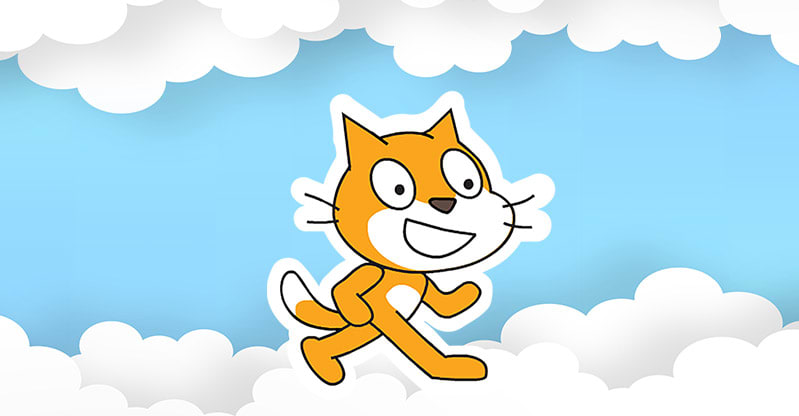
Java
Seeing kids coding will become, more and more common and Java is here to help, as one of the favorite kids coding languages. Java is a general-purpose programming language, widely used in the field of robotics, e-commerce and Android apps. Java is one of the simplest and more scalable programming languages. Your kids will be able to develop with this programming language, while creating and coding their very own virtual robots, or while exploring the number of possibilities of things to create while putting it into practice.
James Gosling, the creator of this programming language may not have imagined the number of kids who are using this language in classrooms all over the world to create outstanding things that’ll improve tomorrow’s world.

LiveCode
According to sources like Wikipedia, “the LiveCode software creates apps that run in many supported environments, using a compile-free workflow. The same computer code in LiveCode can play across multiple devices and platforms.” This allows your kids to create freely, knowing that the apps they imagined and are turning into realities, will be able to run in a number of devices, operating systems, and platforms. Knowing this is very encouraging for them when they learn to code.
Boosting your kids’ self-confidence and self-esteem is one of Tekkie Uni’s main goals; using LiveCode will help accomplish this. Just imagine, the app created by your kid could be used anywhere and by anyone. Exciting, isn’t it?
Also, LiveCode uses a high level, English-like programming language called Transcript that is dynamically typed. This makes it easier for your teens to create the functions they thought about.
LiveCode is also used in some of Tekkie Uni’s online coding courses and it is a great coding language.
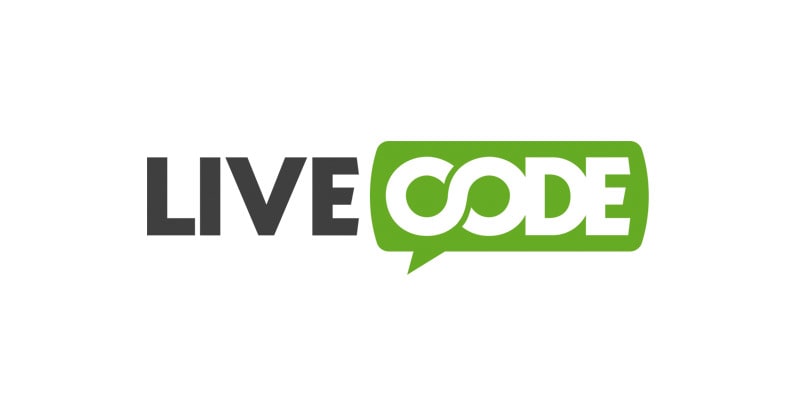
Python
We’ll be honest with you, not all kids can start their journey in the programming world with Python. After some time using blocks of code in Scratch and exploring the multiple possibilities Java can offer them, your sons and daughters will feel more comfortable using Python.
According to Wikipedia, “Python’s design philosophy emphasizes code readability with its notable use of significant whitespace. Its language constructs and object-oriented approach aim to help programmers write clear, logical code for small and large-scale projects”.
But what does this mean? In short, it means that by learning Python in one of Tekkie Uni’s online courses, your kids will be able to do almost anything: On any scale and for any industry. It means that dreams can come true and it means that your children can believe their own dreams can be turned into praiseworthy realities.
As we are going to mention in a few paragraphs, Python is considered one of the easiest to learn programming languages. Just keep on reading and we’ll dig deeper into the Python subject.

Ruby
The Ruby coding language has one of the most readable syntaxes for programmers who are just starting. If your children want to learn to code, this might be a great starting point for them. Since Ruby is very self-explanatory, it is a great tool for educators to use all over the globe, when running coding classes. This type of code was developed in the middle of the 1990s, in Japan, by Yukihiro Matsumoto. When Matsumoto, a computer scientist, software programmer and program developer first created Ruby, he never imagined that kids would coding amazing things with his technology and educators would use Ruby to teach kids how to code.
According to Wikipedia: “Matsumoto describes the design of Ruby as being like a simple Lisp language at its core, with an object-oriented system (…)”. But, what can your kids create with this coding language? Well, they could be building web apps, APIs, mobile and desktop apps, can you imagine? They could create a breathtaking app to share with the entire family.
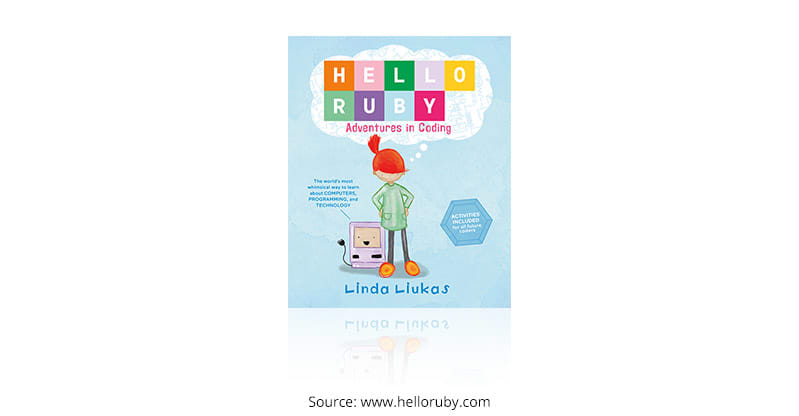
What is the simplest coding language?
This is a hard question to answer. Actually, when you see your kids coding something cool, any one of these kids’ coding languages may seem simple. That being said, we truly recommend kids begin their adventure with coding languages with the available visual programming languages.
Many schools all over the world, are implementing a coding curriculum where kids can learn by building strong coding structures, and seeing their very own software running and being used by a number of different users.
Everything will depend on the way we teach kids to code, and how to write a neat program. But, once again, when mentioning what is the simplest coding language for kids to learn and create a very cool program or app, we would stay with something like Blockly, Scratch, or anything within the lines of the visual programming tools.
If we need to be specific, we would have to talk again about Scratch and its visual and colorful blocks. Although it has a Java Script background, Scratch is a great way to keep your kids coding and happy.
Now, if we ask adults about the easiest coding language to learn, and according to recently published rankings, most of them debate between Python and Ruby, and we mentioned the 2 of them in the previous paragraphs. Java, although it is very useful, apparently is not categorized as a programming language that is easy to learn.
How do I teach my child to code?
So you want your kids to create a program or to design their very own app? Maybe, you just want to prepare your kids for the future and nurture them with the necessary 21st-century skills they’ll need to reach success? Well, either way, we’d like to help you teach your kids how to code, and introduce them to the programming languages we mentioned in this article.
Understand that the world has changed
It doesn’t matter if your kids learn Java, Python, C++, or Ruby. The main concept we must understand as parents is that the world changes and how important is digital literacy for this new, hyper-connected world.
When your kids learn code and build their own program or app, they are doing much more than just that. At the same moment, they are gaining numerous 21st-century skills that they will benefit from, such as critical thinking, computational thinking, creativity, and problem-solving. These skills will be key when assuring a soft landing into the workforce of the future.
But, how to teach your kid to code? Basically, understanding one very important rule: Coding is a language. Just like you used to learn Spanish, English or French at your local high-school to have more possibilities in the future. Coding is the way in which your kids will communicate with technology and with society.
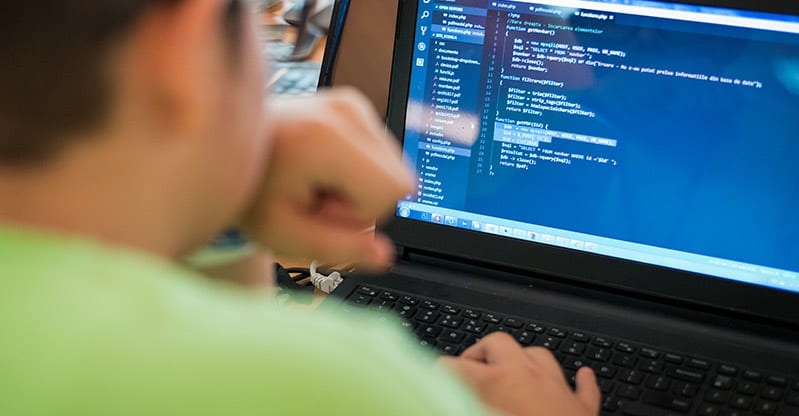
Hands-on learning
One of the new educational paradigms that is creating a fantastic and positive revolution in classrooms around the world, is the integration of hands-on learning. When kids experience the content that is being taught to them, the reception tends to be more positive, and instead of just understanding, they comprehend and integrate these new skills, abilities, and knowledge.
Systems like Montessori have been talking about hands-on learning for a long time, but sadly, not many classrooms have integrated it in a good way, to enable their students to interact with knowledge and to absorb it in a much more productive way.
In the Tekkie Uni classes, your kids will be able to learn many of these programming languages for kids while using them. You’ll be surprised by the outstanding apps, programs, games and software they’ll create… and the most interesting part is that they’ll be building them while learning, while doing, while creating.
There will never be a good enough programming language for kids, if the environment in which they learn it is not safe enough for them to feel comfortable and to cultivate their self-confidence.
Mistakes are learning experiences
Here’s a mindset change you must do when teaching your kids how to code. Take their mistakes as a learning experience. Just like in formative assessment, standardized tests do not work when teaching how to code. If your kids can feel safe enough to make mistakes while creating an app or a program, the final results of their creations will be astonishing.
Again, the environment in which your children learn code should be encouraging, comforting, and safe. Therefore, mistakes should be both accepted, and required. It is making mistakes where we understand there are multiple ways of solving the one same issue, and it is exactly then that we strengthen our problem-solving ability.
When you teach your kids how to code, using one of these 5 programming languages for kids, you are allowing them to experience their self-expression and their creativity like never before. You will see them becoming curious and excited to discover more new ways to solve the same problem, and that is priceless.
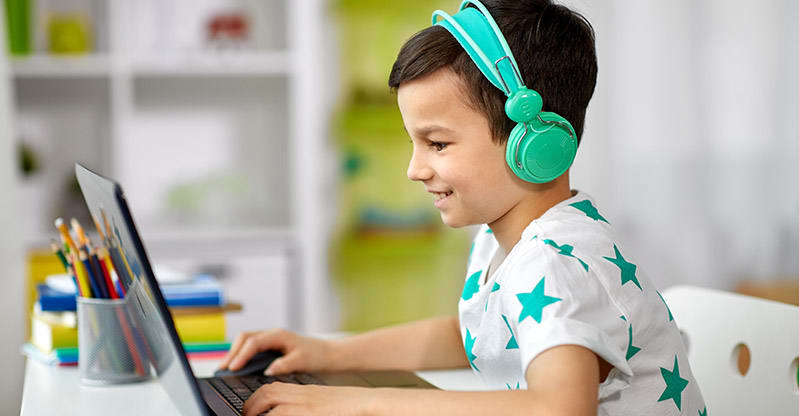
What coding language do most games use?
We know that, most likely, your kids spend a lot of time playing Fortnite and other games like this one, but do they know which coding languages are the most used when developing games and gamified programs? Well, we have a few answers for you, and for your kids.
The two main programming languages used when developing games are Java and C++. Also, C# for Unity is widely used nowadays. Actually, the virtual robot used in Tekkie Uni’s robotics course was developed and designed using Unity.
Creating a gamified program or an app, requires much more than just knowing your code well. It requires the developers to deeply understand the potential users, and to spend a lot of precious time building a program that will leave players with a mouth wide open.
So, according to most rankings, the coding languages most used in games are:
- Java
- JavaScript
- C++
- HTML5
- CSS3
- SQL
But don’t worry. The app your kid could create in one of Tekkie Uni’s courses will give them to tools to create much more than games. Who knows? Your kids could end up creating a program or an app that might optimize our world. The programming kids of today, are the ones who are going to lead and rule the world of tomorrow.
Where can your kids learn these and other programming languages?
Learning to code can become a headache for your children if they don’t do it in the right place. Make sure you choose a safe learning environment, a place where they can practice hands-on learning and where mistakes will be seen as learning experiences.
In the courses offered by Tekkie Uni, your children will freely interact with their guides and instructors, while creating their very own apps in an open and safe space; a space in which the main focus is on themselves, and on the personal progress of each one of the classmates.
Give your children the gift of coding. Let them create the future with their hands and minds. It is up to you!









